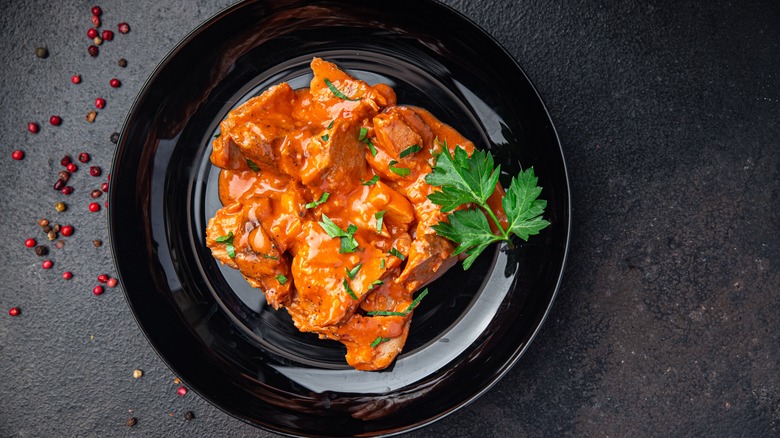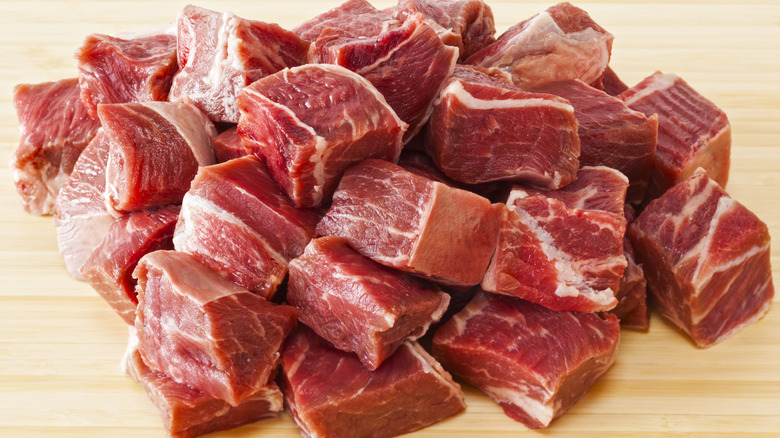Here's How To Make Beef Stew Like An Italian Chef
A steaming bowl of old fashioned beef stew is quite possibly the ultimate comfort food. Since its inception in 14th century France, cultures worldwide have created unique variations of the hearty classic. Today, we want to turn our attention to a version from Northern Italy that flies under the radar: spezzatino. The dish is relatively similar to beef Bourguignon and goulash, albeit with an Italian twist thanks to the herbs used for seasoning.
In order to learn a little more about the dish and how it's prepared, we spoke with Jasper J. Mirabile Jr., chef and owner of Jasper's Restaurant in Kansas City and host of Live! From Jasper's Kitchen on KCMO Radio. Mirabile's fondness for the dish is abundantly clear as he reminisces. "I grew up enjoying my mother's 'spezzatino,' always with a rich broth prepared with wine," Mirabile told us. "Of course, the addition of bay leaves and rosemary gives such a great flavor, and the must-have ingredients of carrots, onions, and celery, enhance the slow cooking process."
The ingredients are similar to other traditional beef stews, but Mirabile explains that the secret to spezzatino is how the meat is treated early in the cooking process. Mirabile explained, "Why [is the meat] so tender? This is due to first deglazing the pan while the meat is sauteed with the wine and then the slow cooking technique in the broth. I can guarantee you a mouthwatering, and delicious stew."
The best cut of beef for your stew
The beauty of stew is found in the way slow cooking melds all of the different flavors together. The richness of the wine plays off of the earthy notes of rosemary, while the sweetness of the onions and potatoes cuts through the fat in the beef. One could argue that all of the flavors are anchored by the protein, or, at the very least, if you use too lean a cut of beef, the stew will taste lacking.
When Jasper Mirabile Jr. hits the butcher shop before preparing Italian beef stew (spezzatino), his cut-of-choice is chuck. "Marbling alone will give it such great flavor, but this also makes for such a tender dish," he explained. "Along with braising, this is my go-to guarantee and the best way to honor the authentic recipe passed down from my mother and grandmother."
Marbling is important in beef — particularly when used in stews — because the fat tenderizes and flavors the meat as it is cooked. Unlike the pads of fat that we cut off the side of a steak, the integration of marbling throughout the meat spreads its flavor evenly across each individual piece. Now that you know the perfect meat needed to prepare spezzatino, it's important to know what to serve alongside the stew. In Northern Italy, the tradition is to serve the rich stew with creamy polenta. When you consider the humble ingredients and simplicity of the dish, it's easy to pull together on a budget.

